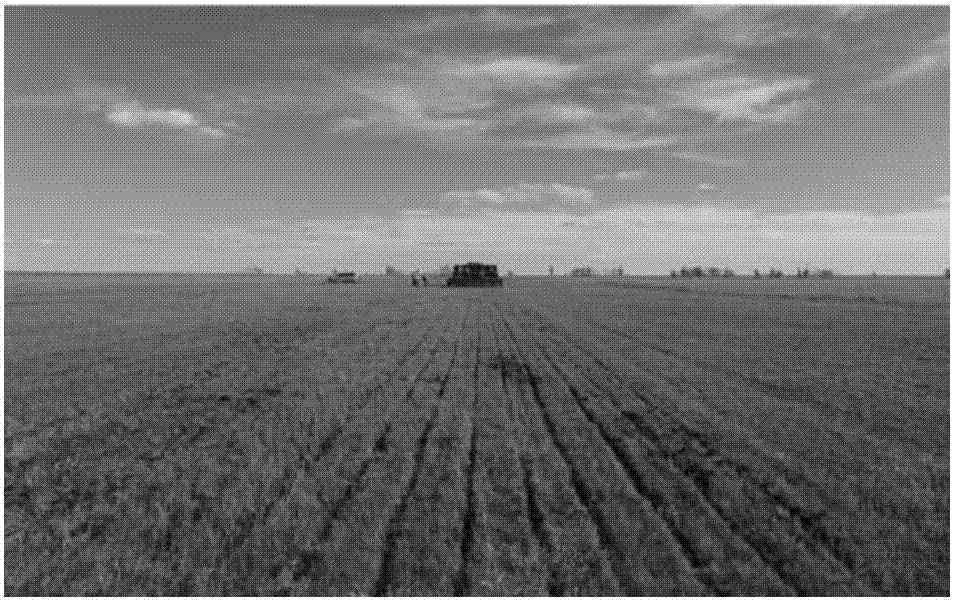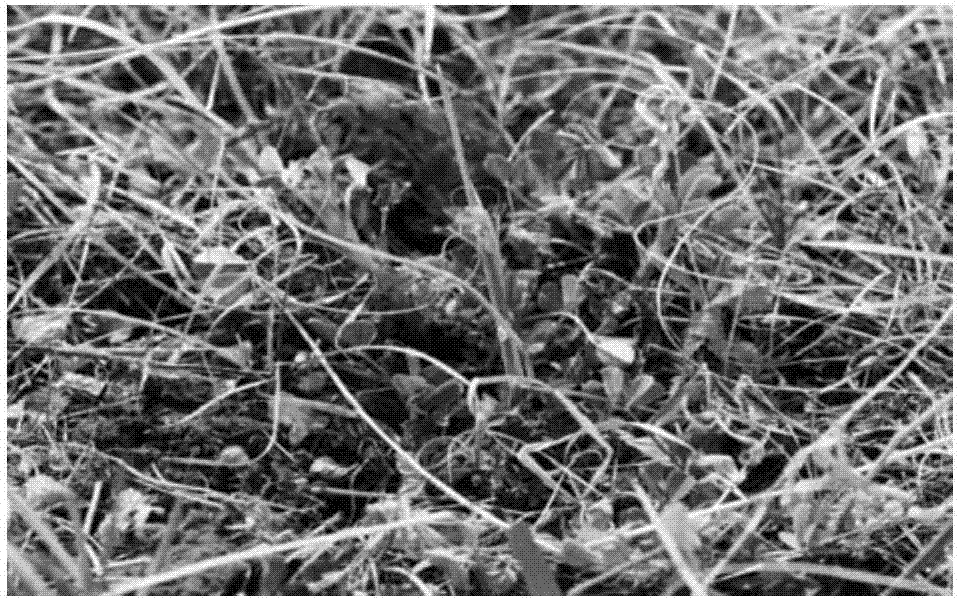Method for reseeding alfalfa in degenerated leymus chinensis pasture
A technology for degraded grassland and alfalfa, applied in the field of reseeding alfalfa on degraded Leymus chinensis grassland, can solve the problems of disturbing the nitrogen cycle of the ecosystem, low nitrogen use efficiency, loss of biodiversity, etc., and achieve beneficial nitrogen assimilation and biological Effect of maintaining diversity and improving stability
- Summary
- Abstract
- Description
- Claims
- Application Information
AI Technical Summary
Problems solved by technology
Method used
Image
Examples
Embodiment 1
[0044] Embodiment 1, a kind of method of resowing alfalfa in degraded Leymus chinensis meadow
[0045] 1. Supplementary varieties
[0046] The species of re-sowing was wild yellow clover (Medicago falcata L.), which was collected from the natural grassland of Hulunbuir, and the seed germination rate was 92%.
[0047] 2. Sowing method
[0048] 1. Sowing time and place
[0049] Sowing time: June 4, 2013;
[0050] Sowing location: Xiertala Ranch, Hailar District, Hulunbeier City, Inner Mongolia (49°21'0.72"N, 120°5'48.77"E).
[0051] 2. Preparation before sowing
[0052] (1) Mowing
[0053] Before sowing, the original vegetation is mowed, including all the original vegetation of legumes and non-legumes, and the stubble height is 8-10cm.
[0054] (2) Rhizobia inoculation
[0055] Adopt the mode of direct seed dressing to carry out rhizobia inoculation to yellow alfalfa seed before sowing, inoculum amount is that 500g alfalfa seeds are inoculated with 55g rhizobia agent (pur...
Embodiment 2
[0070] Embodiment 2, a kind of method of reseeding alfalfa in degraded Leymus chinensis meadow
[0071] 1. Supplementary varieties
[0072] The supplementary seeding variety was the root tiller type alfalfa variety WL168 (Medicago sativa ssp.). Root tiller type alfalfa WL168 seeds are products of Beijing Zhengdao Ecological Technology Co., Ltd. (Beijing, China), with a germination rate of 98%.
[0073] 2. Sowing method
[0074] 1. Sowing time and place
[0075] Sowing time: June 4, 2013;
[0076] Sowing location: Xiertala Ranch, Hailar District, Hulunbeier City, Inner Mongolia (49°21'0.72"N, 120°5'48.77"E).
[0077] 2. Mowing
[0078] Before sowing, the original vegetation is mowed, including all the original vegetation of legumes and non-legumes, and the stubble height is 8-10cm.
[0079] 3. Sowing
[0080] Alfalfa reseeding on degraded Leymus meadow using no-tillage reseeding machine. Sowing row spacing: 30cm; sowing depth: 2cm; sowing rate: 15kg of inoculated seeds ...
PUM
 Login to View More
Login to View More Abstract
Description
Claims
Application Information
 Login to View More
Login to View More - R&D
- Intellectual Property
- Life Sciences
- Materials
- Tech Scout
- Unparalleled Data Quality
- Higher Quality Content
- 60% Fewer Hallucinations
Browse by: Latest US Patents, China's latest patents, Technical Efficacy Thesaurus, Application Domain, Technology Topic, Popular Technical Reports.
© 2025 PatSnap. All rights reserved.Legal|Privacy policy|Modern Slavery Act Transparency Statement|Sitemap|About US| Contact US: help@patsnap.com



